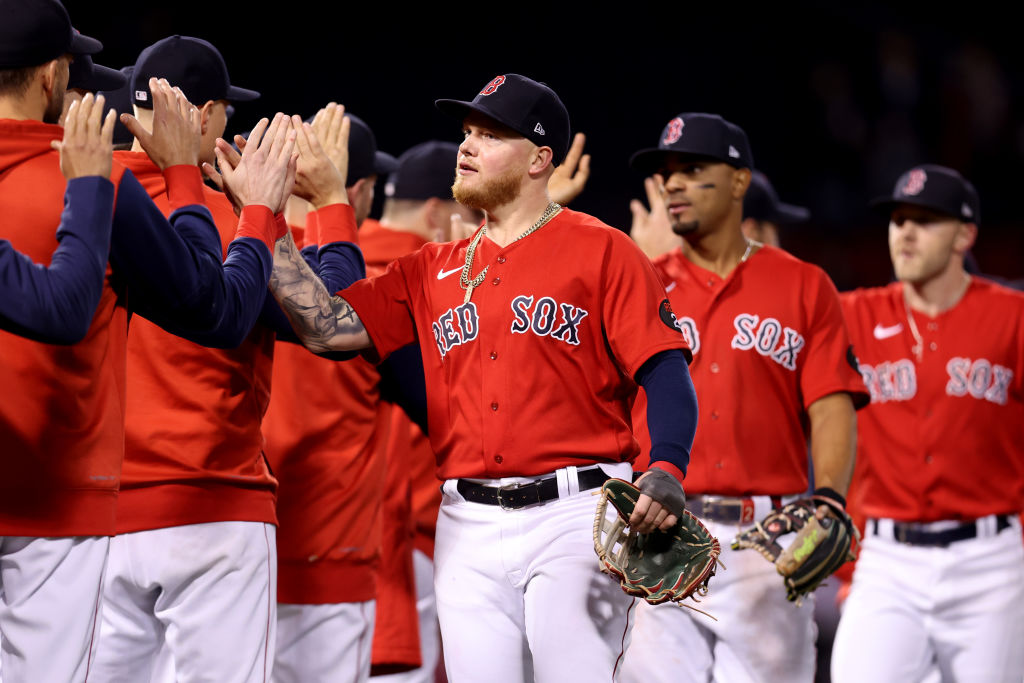Eric Hosmer’s Fenway stats make Red Sox trade look even better
Former San Diego Padres first baseman Eric Hosmer is a clear upgrade over Bobby Dalbec and Franchy Cordero for the Boston Red Sox.
That fact is especially true when looking at Hosmer’s career statistics at Fenway Park. In his 24 career games against the Red Sox in Boston, Hosmer has three home runs, 17 RBIs, a .354 batting average and an .889 OPS.
Granted, that is against the Red Sox, which he no longer has the luxury of doing. But, Hosmer hits .272 with a .727 OPS this season. Dalbec and Cordero in those same categories? Dalbec is .207 and .647 and Cordero is .219 and .660.
Not to mention, Hosmer has a 1.2 WAR this season compared to Dalbec and Cordero’s -0.7 and -0.4, which extends past their offensive performance.
Hosmer has four Golden Glove awards in his career, including three straight from 2013-2015. It’s been five years since he’s taken home the award, but he’s a clear improvement over what the Red Sox put out there before this trade.
Over the next 3.5 years, the Padres will reportedly pay Boston up to $43.5 million, according to Ronald Blum of the Associated Press. That includes over $6.7 million this season, then more than $12.2 million in each of the next three seasons.
That means the Red Sox will pay Hosmer $2.5 million combined over the next 3 1/2 years. The most they’ll pay him in a single season is in 2025. That number is $760,000, which will be the league minimum that season.
By giving away 23-year-old pitching prospect Jay Groome — who had a 3.94 ERA during 16 innings with the Triple-A Worcester Red Sox — Boston upgraded its worst fielding position at minimum financial cost for the next few years.









